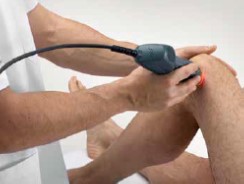Healing is a process. It will have similar parameters for everybody, but there will inevitably be some variation from person to person. The nature and extent of an injury will also dictate the length of the healing process.
Osteopathy and laser treatment optimise your body’s natural biological reactions. In osteopathy, it is mechanical pressure, in laser, it is light energy that influences the body cells to produce the cellular products necessary for healing to take place. Both osteopathy and laser complement one another. The work produces good tissue length and tissue fibre alignment with as little or as good quality scar tissue as possible. Evidence also suggests that greater benefit will occur if these treatments are used alongside appropriate exercise prescription.
The following are the stages of tissue repair. In reality they will likely blend into one another as opposed to being isolated events:
Bleeding. All tissues will bleed with injury to a varying degree, on average for 4-6 hours. This is not the time to receive manual therapy, but could be a good time to apply an ice pack for no longer than 10 minutes.
The second phase is inflammation. This starts approximately one hour after the injury. The inflammatory process starts and reaches a peak over 1 to 3 days. However it can be quite normal for it to continue for a few weeks beyond an injury, inflammation is necessary to bring the products needed into the area for repair.
Inflammation gets tissues ready for mending – the proliferation phase. This can actually start quickly beyond an injury, but may continue for up to 6 months.
Finally the injury will enter the remodelling phase. The basic scar tissue formed in the proliferation phase is refined here. This process could still be continuing over 1-2 years. Despite people hopefully being able to return to more normal activity in the meantime.


